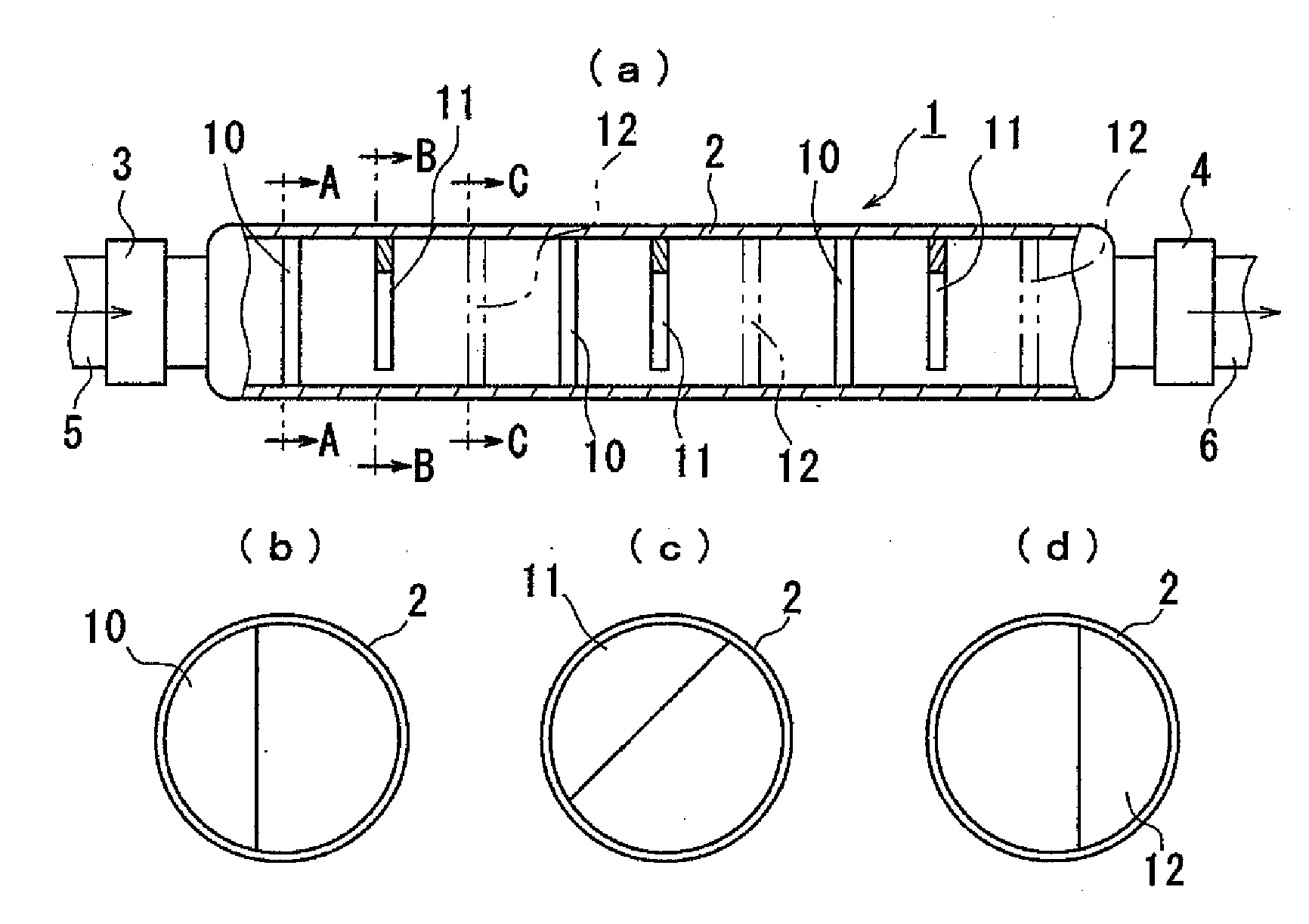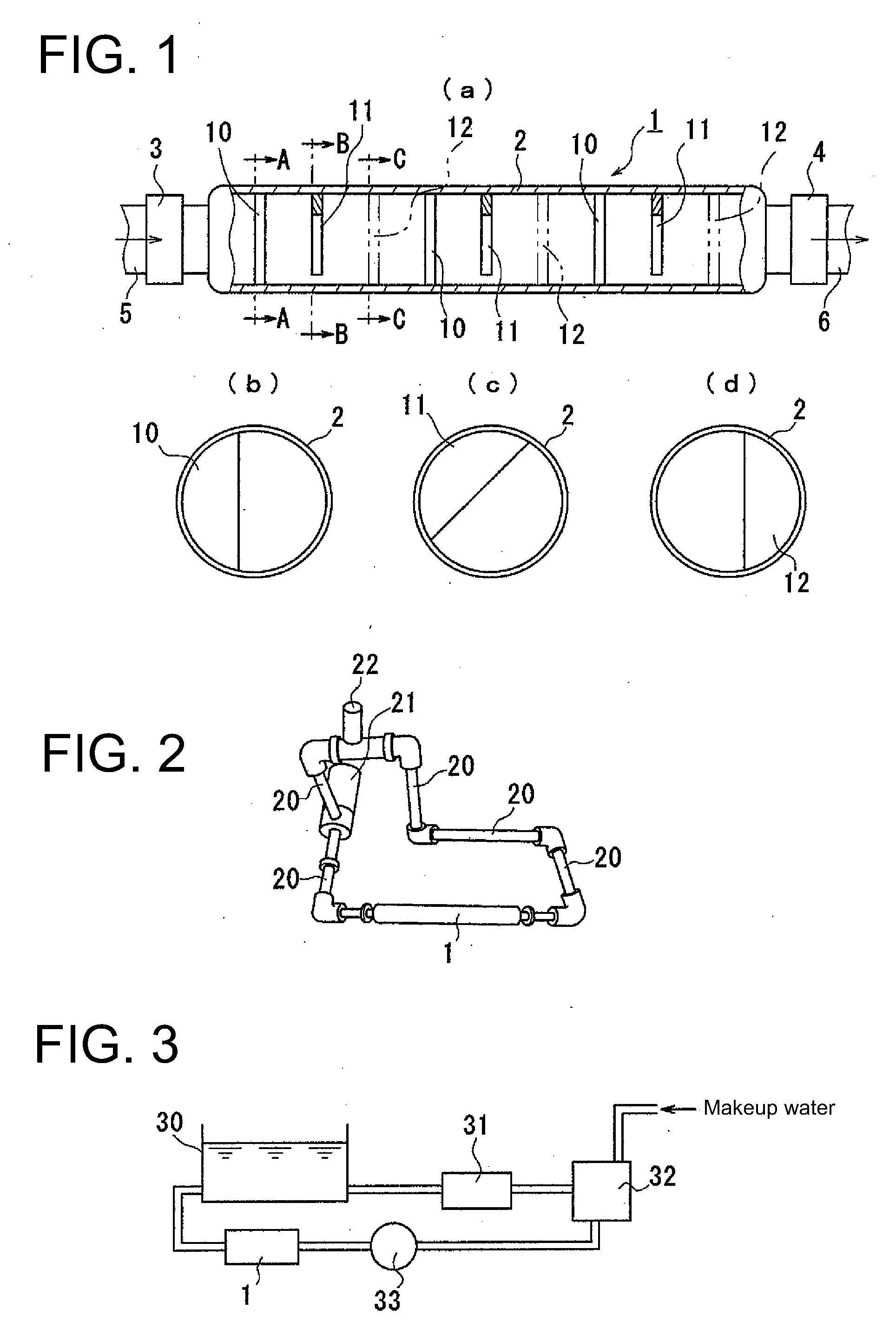Water-circulating sterilizer
a technology of water-circulating sterilizer and circulating water, which is applied in the nature of treatment water, multi-stage water/sewage treatment, contaminated groundwater/leachate treatment, etc., can solve the problems of difficult installation space, difficult control, and imperfect sterilization, and achieve the effect of shortening the tim
- Summary
- Abstract
- Description
- Claims
- Application Information
AI Technical Summary
Benefits of technology
Problems solved by technology
Method used
Image
Examples
Embodiment Construction
)
[0019]One embodiment of the water-circulating sterilizer will be described with reference to FIG. 1. Pipes 5, 6 are connected to a water inflow port and a water outflow port, respectively, of a cylinder 2 of the water-circulating sterilizer 1 made of a hardly corrodable material such as stainless steel with interposition of respective joints 3, 4. Three plates of a first alloy plate 10, a second alloy plate 11 and a third alloy plates 12 are combined into a set, and plurality sets of these first, second and third alloy plates 10, 11 and 12 are disposed in the cylinder 2 from the inflow port toward the outflow port of water (three sets in this embodiment).
[0020]The first alloy plate 10 comprises an alloy containing at least copper and tin. An alloy comprising five metals of nickel, zinc and iron in addition to copper and tin was used in this embodiment. The alloy is able to extract electrons from Legionella pneumophila by allowing the alloy to contain copper and tin.
[0021]The second...
PUM
 Login to View More
Login to View More Abstract
Description
Claims
Application Information
 Login to View More
Login to View More - R&D
- Intellectual Property
- Life Sciences
- Materials
- Tech Scout
- Unparalleled Data Quality
- Higher Quality Content
- 60% Fewer Hallucinations
Browse by: Latest US Patents, China's latest patents, Technical Efficacy Thesaurus, Application Domain, Technology Topic, Popular Technical Reports.
© 2025 PatSnap. All rights reserved.Legal|Privacy policy|Modern Slavery Act Transparency Statement|Sitemap|About US| Contact US: help@patsnap.com


